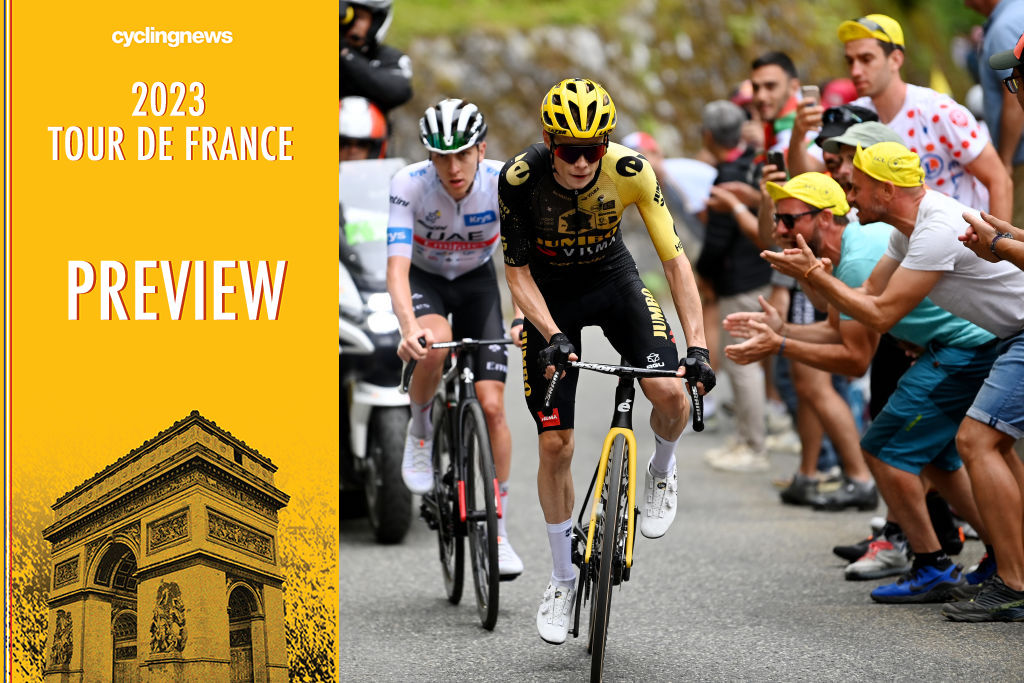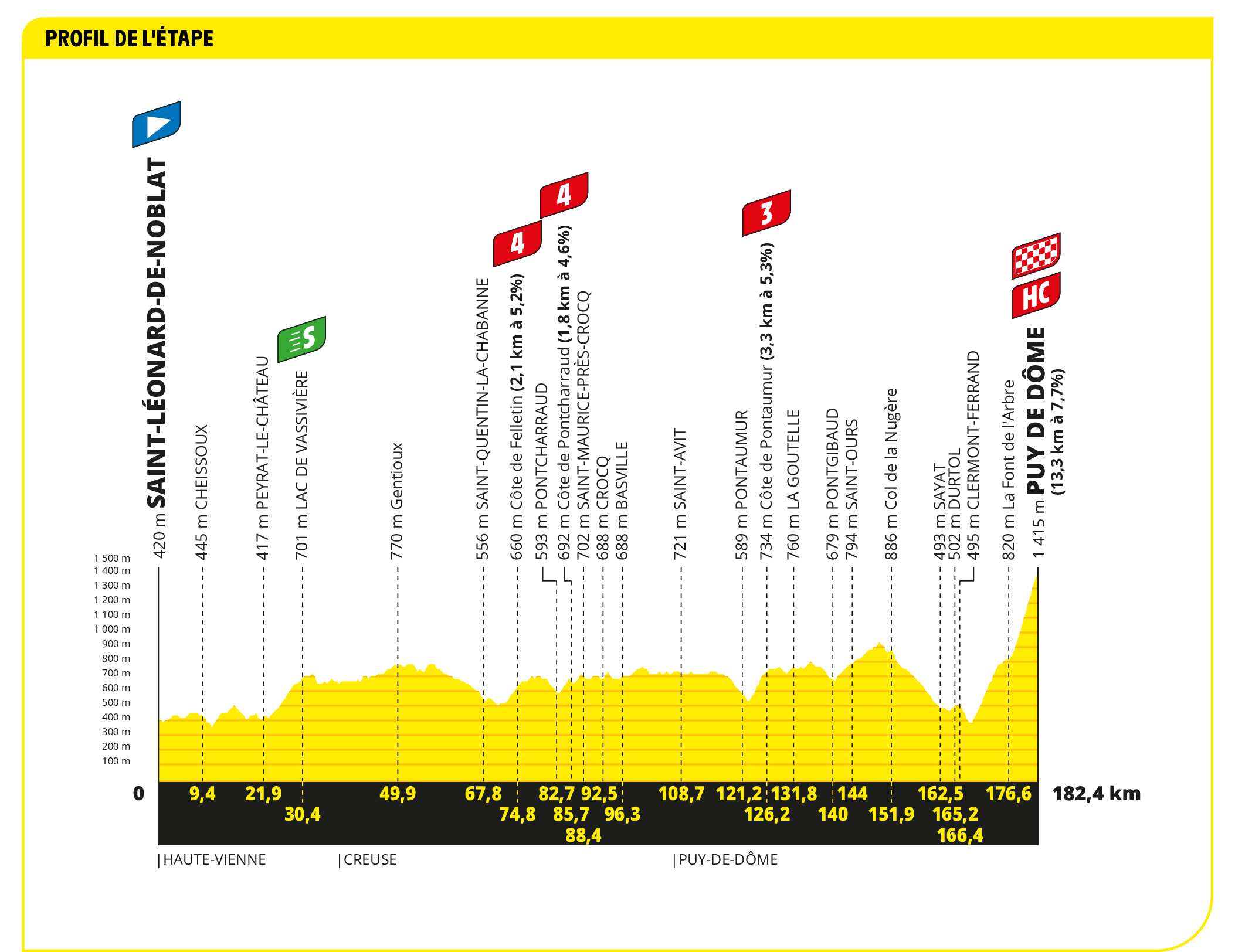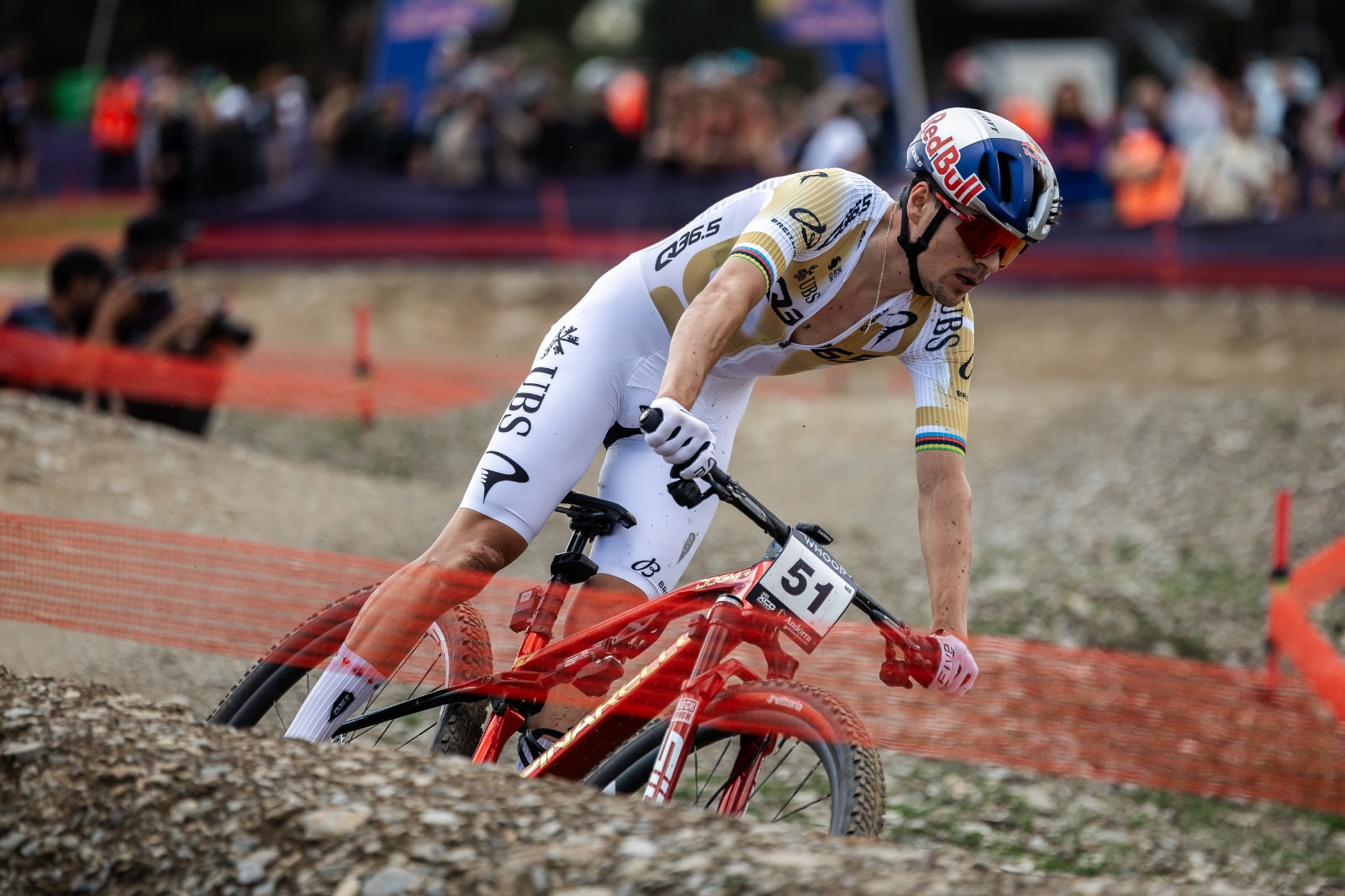Tour de France GC battle hots up with return of Puy de Dôme - Stage 9 preview
Fresh opportunity for a climbing duel for Tadej Pogačar and Jonas Vingegaard

After 35 years off the grid, it’s safe to say the much-anticipated return of the Puy de Dôme to the Tour de France this Sunday could hardly have come at a better time for the race. Just when the two biggest GC challengers Tadej Pogačar (UAE Team Emirates) and Jonas Vingegaard (Jumbo-Visma), have provided some intriguingly mixed first-week messages regarding their respective climbing games, it turns out the Tour de France is heading straight towards one of the toughest ascents in the country.
With so much cycling history containing in almost every metre of the road that loops its way upwards around this extinct (or hopefully extinct) volcano, the Puy de Dôme’s re-entrance onto the Tour stage was always going to provide a nostalgia wave for cycling’s past with a capital ‘n’. But as fascinating as its past may be, the Puy de Dôme also marks another big, bang-up-to-date chapter in the ongoing Pogačar-Vingegaard duel for overall Tour supremacy as well.
Even better, without seeing any actual evidence, it’s hard to decide on paper which of the two contenders is more favoured by a climb as relentlessly steep as the 12.6-kilometre Puy de Dôme. It’s worth remembering that while the Puy’s official average gradient of 7.8% doesn’t sound too bad, that’s because, in one Hors Categorie-classified climb, the organisers have actually included two ascents and a short, easier 3.6-kilometre section between the two.
The first segment, the Côte de Baraque is ranked 5.5km at 7.1%. The second part, which constitutes the ‘real’ Puy de Dôme is only 4.5km long, but has a gradient of 11.5%. Suddenly the Puy de Dome’s reputation as a leg-breaker gains more than a few percentage points.
So what could happen? The first question is whether a break of the day sticks or not on the long grind eastward past the Lac de Vassiviere (scene of Tour great Miguel Indurain’s last ever time trials wins, back in the 1995 race) and then on through the Creuse and Puy-de-Dome regions. But when we get to the heart of the matter on the one major climb of the day just outside the city of Clermont-Ferrand, it’d be reasonable to imagine a scenario in which the Côte de Baraque will see a major shredding of the peloton.



So almost as soon as the race hits the ‘real’ Puy de Dôme, we’ll likely be down to a couple of dozen GC riders at most. But, with no disrespect intended, barring major surprises, a colossal amount of the GC interest at this point will centre on just two of them.
And then? Right now, it’s impossible to say. Even before the Tour de France, past history, this season tells us Vingegaard nor Pogačar are anything but out of their element on ultra-steep gradients.
Be it on the legbreaker of the Grenoble Bastille on the last day of this year’s Critérium du Dauphiné, or in the Itzulia-Pais Vasco at the ‘side of a house’ finish in Vilabona, or at Monte Trega in O Camiño way back early this season, Vingegaard has proved he is more than capable to handing the toughest gradients cycling can throw at him. At the same time, Pogačar’s victory in Flèche Wallone atop of the Mur de Hûy hardly suggests he'll be on the backfoot.
And yet. When we got to the Tour and the Pyrenees, Vingegaard managed to drop Pogačar with a single, deadly attack on the Côl de Marie-Blanque on Wednesday, only to lose time the following day at Cauterets. As for Pogacar, clearly on top of his game at Cauterets, 24 hours earlier when he was dropped on the Marie-Blanque, there had been a broad consensus that the GC race was already over bar the shouting for the Slovenian.
So if this GC battle were a court case taking each rider on their merits, right now you could say both the prosecution and the defence have good arguments in favour and against. But when it comes to a verdict, the Puy de Dôme could finally do what the Pyrenees proved incapable of achieving: provide us with some much-needed clarification in a GC climbing panorama that is looking decidedly foggy right now.
This won’t be the final picture, of course, with the Jura, the Alps and the Vosges all potential courts of appeal for both sides. Vingegaard himself said after defeating Pogačar at Laruns on stage 5 that “knowing Tadej, he’ll continue fighting all the way to Paris,” and it’s a fair bet that the opposite is true as well.
At the same time, Vingegaard currently has a 25-second advantage on Pogacar. As such, Vingegaard can afford to play things a little more conservatively if he wants or needs to do so.
Lastly, it’s worth remembering that one factor that Pogačar may find hampers him is the heat. He already highlighted the high temperatures on Saturday and temperatures are forecast to be well over 30 degrees in Clermont-Ferrand on Sunday. That, again, could be a plus point in Vingegaard’s favour, although the most recent result at Cauterets, was most definitely in favour of Pogačar.
You could, of course, do worse than look beyond the Vingegaard-Pogačar going-for-it-hammer-and-tongs theory and argue for a completely different outcome to Sunday. Another scenario is that the two of them decide to join forces so they (theoretically) end up putting so much time into the other GC contenders that the 2023 Tour definitively comes down to a two-way battle. As things stand, the current closest dangerman for both is Jai Hindley (Bora-Hansgrohe) at 1:34, while Carlos Rodriguez (Ineos-Grenadiers) heads a little knot of GC contenders around the 3:30 to 4:45 mark. Both riders might feel more comfortable with a bit more time gain. However, it’s also conceivable that one of the other GC contenders has a shot while Vingegaard and Pogačar watch each other too closely. After all, we’re fast getting to the point where the rest of the overall contenders have nothing to lose.
The good thing about such a tough finale to a tough first week, of course, is that whatever happens, it cannot be seen as definitive. There is too much of the race left to run, too much-unfinished business and too many overdue sporting debts to be settled. And this much we know at least: on one of the Tour’s most emblematic summits and with one of the most prestigious stage wins of this year’s race at stake, neither Vingegaard nor Pogačar, the two top favourites, are likely to be holding back. Dormant or extinct this volcano may be, then, but on Sunday n the Puy de Dôme, the sparks will surely fly.
The latest race content, interviews, features, reviews and expert buying guides, direct to your inbox!
Alasdair Fotheringham has been reporting on cycling since 1991. He has covered every Tour de France since 1992 bar one, as well as numerous other bike races of all shapes and sizes, ranging from the Olympic Games in 2008 to the now sadly defunct Subida a Urkiola hill climb in Spain. As well as working for Cyclingnews, he has also written for The Independent, The Guardian, ProCycling, The Express and Reuters.
Latest on Cyclingnews
-
Sarah Sturm and Zach Calton plunder Utah gravel for solo wins at Crusher in the Tushar
Emma Langley and Torbjørn Røed ride to runner-up positions as race returns from year off due to area wild fires -
How to watch the Tour de France 2025: TV, Streaming, official broadcasters
Where to watch the biggest race in the world this July -
Tom Pidcock conquers 'home' cross-country race in Andorra round of UCI Mountain Bike World Series
Third time is the charm as Olympic Champion scores the victory at Pal Arinsal course after fourth row start -
'This Tour is growing me old' - Tadej Pogačar hints at defensive tactics for first mountain stage after losing wingman João Almeida
UAE Team Emirates-XRG expected to clash with Visma-Lease a Bike on tough stage in the Massif Central on Monday




